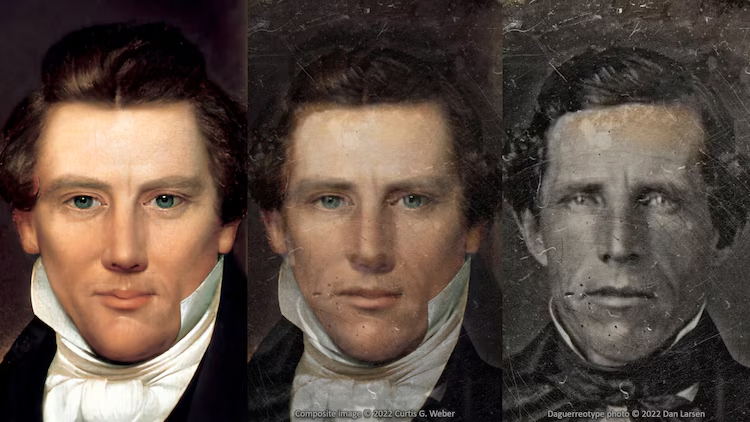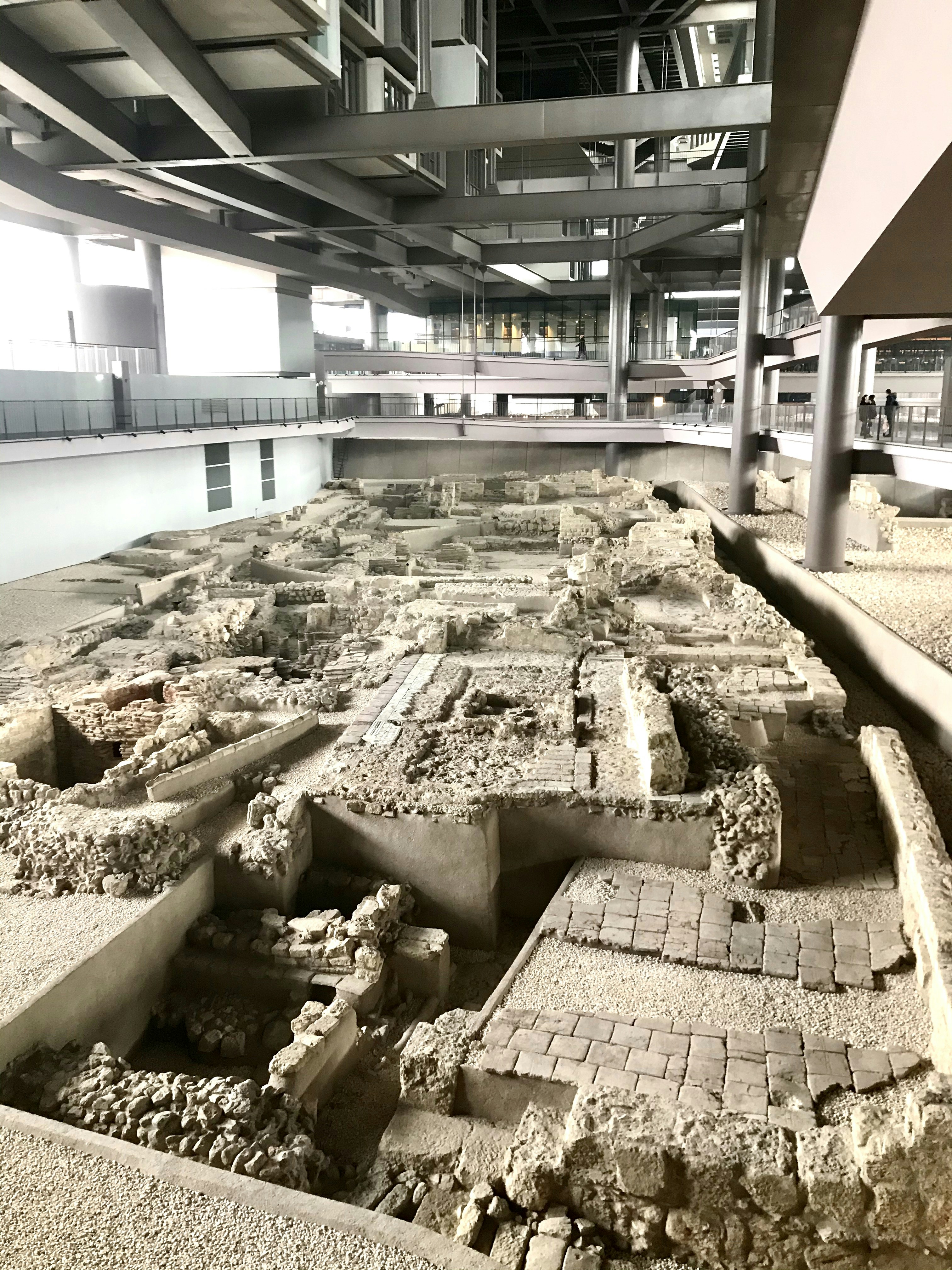Joseph Smith: The Visionary Who Transformed American Christianity

Joseph Smith
Introduction to Joseph Smith
Joseph Smith, the founding prophet of the Church of Jesus Christ of Latter-day Saints, emerged from the cultural and religious milieu of early 19th-century America. Born on December 23, 1805, in Sharon, Vermont, Smith was raised in a household deeply engrossed in religious discussions, with a family environment that revered Christian beliefs. His parents, Joseph Smith Sr. and Lucy Mack Smith, instilled in him a sense of spiritual curiosity that would later guide his life’s work. This upbringing, marked by the fervent religious climate of the time, played a pivotal role in shaping his vision for restoring Christianity.
The socio-political climate during Smith’s formative years was characterized by significant upheaval and change, with the country experiencing rapid westward expansion, economic challenges, and a diverse array of religious movements. Known as the Second Great Awakening, this period witnessed a resurgence of evangelical fervor, marked by revivals and the proliferation of various sects. Smith’s early experiences in this dynamic environment fostered a deepening interest in spiritual matters, culminating in his first vision in 1820, which set the stage for his later revelations.
In the backdrop of a religiously diverse society, Smith embarked on a journey that would see him claim divine encounters that he believed led to the restoration of original Christianity. His quest for understanding spirituality and truth was not just personal but reflective of the broader search for religious authority that many were experiencing at that time. As he interacted with various faiths and denominations, Smith found himself compelled to articulate a new vision for Christianity—a vision that would culminate in the establishment of the Mormon Church, which sought to blend traditional Christian beliefs with new revelations. This introductory exploration of Joseph Smith’s early life will provide crucial context for understanding the transformative impact of his subsequent religious actions and teachings.
The First Vision: A Spiritual Awakening
In the early 1820s, a young Joseph Smith found himself immersed in the fervent religious revival atmosphere of upstate New York, a period marked by intense spiritual conflict and a quest for clarity among various Christian denominations. Confused by differing doctrines and the contentious nature of religious discourse, Smith sought divine guidance to discern the truth among the competing claims. This search for clarity set the stage for a profound spiritual awakening that would forever alter the trajectory of American Christianity.
On the morning of a clear spring day in 1820, Smith retreated to a secluded grove near his home in Palmyra, New York, determined to pray for understanding. In this sacred moment, he experienced what would come to be known as the First Vision. During this encounter, Smith reported seeing a brilliant light, which gradually transformed into two personages who introduced themselves as God the Father and Jesus Christ. This vision not only provided Smith with a clarifying message regarding the nature of God but also commissioned him to restore the true church that had been lost after the early apostolic age.
The implications of the First Vision were profound, not only for Smith but also for the broader community of believers. The vision became a cornerstone of Smith’s prophetic claims and catalyzed the formation of The Church of Jesus Christ of Latter-day Saints. Following this encounter, Smith faced significant opposition, but he remained resolute, driven by the confidence that he had been chosen to fulfill a divine purpose. His testimony of the First Vision galvanized individuals in his community, encouraging many to seek their spiritual convictions and ultimately affirming a narrative that diverged sharply from the existing Christian paradigms. A new chapter in American religion had begun, anchored in Smith’s vision and the belief in a restored Christianity.
The Book of Mormon: A New Scripture
The Book of Mormon holds a premier position within the corpus of scripture for the Church of Jesus Christ of Latter-day Saints, often referred to as the Mormon faith. Joseph Smith, the founder of this religious movement, claimed to have translated the intricate text from a set of golden plates buried in a hill near his home in Palmyra, New York. According to Smith, the plates were inscribed with an ancient language, which he deciphered with divine guidance and the aid of special instruments known as the Urim and Thummim. The translation process, occurring between 1827 and 1829, was characterized by intense spiritual conviction and dedication, as Smith endeavored to convey the religious and historical narratives contained within the plates to potential followers.
The Book of Mormon was first published in 1830, just a year after the completion of Smith’s translation. The initial reception was both enthusiastic and contentious. Proponents regarded the text as a companion to the Bible, offering additional insight into the teachings of Jesus Christ and highlighting principles such as faith, repentance, and divine revelation. Conversely, critics raised substantial concerns regarding the book’s authenticity, questioning Smith’s claims of divine revelation and accusing him of fabrication. The controversy surrounding the book’s publication often reflected broader societal tensions concerning religion, authority, and the establishment of new religious movements in early 19th-century America.
The theological significance of the Book of Mormon cannot be overstated. It provides unique narratives that broaden the understanding of spiritual experiences and divine communication beyond Biblical accounts. Additionally, it emphasizes the belief in ongoing revelation – a core tenet of the Mormon faith. Despite its contested origins, the Book of Mormon has continued to inspire millions and solidified its role as a foundational scripture within a distinct American religious tradition.
The Doctrine of Polygamy
Joseph Smith, the founder of the Latter Day Saint movement, introduced the practice of polygamy, also referred to as plural marriage, to his followers in the early 1840s. This doctrine was rooted in his belief that it was a divine commandment intended to restore biblical principles for family and community relationships, which he believed had been corrupted over time. Smith’s rationale encompassed both spiritual and practical dimensions, suggesting that plural marriage was a means to exaltation in the afterlife and a way to increase the population of the faithful.
Under Smith’s leadership, the practice of polygamy became a controversial and defining feature of the Mormon faith. Early participants were often required to enter into these additional marriages under the notion that they were fulfilling God’s will. According to historical accounts, Smith himself had numerous wives, with estimates suggesting that he was married to as many as thirty women. This practice initially remained secretive, as the broader American society held strong opposition to the idea of polygamy, perceiving it as morally unacceptable and contrary to established social norms.
This aspect of Joseph Smith’s teachings has left a complex legacy, prompting ongoing debates about its implications for American religious practices and morality. While polygamy was officially discontinued by the mainstream church in 1890, its historical significance continues to resonate, prompting discussions about the limits of religious practice and the evolution of societal norms in the United States.
Building the Mormon Community: Kirtland and Nauvoo
The establishment of early Mormon communities in Kirtland, Ohio, and Nauvoo, Illinois, represents a significant chapter in American religious history, as Joseph Smith’s leadership fostered the growth of a cohesive and vibrant community. Kirtland emerged as the first major gathering place for the Latter-day Saints in the early 1830s. Here, Smith and his followers developed a robust socio-economic framework that emphasized cooperation and mutual support among community members. The building of a temple in Kirtland symbolized the spiritual aspirations of the community and served as a center for worship and instruction.
Smith’s approach to governance within Kirtland reflected a blend of religious and social ideals. He established a theocratic system where church leaders played a pivotal role in decision-making processes. This governance model not only provided structure but also empowered Smith’s authority as a prophet. However, the community faced several challenges, including economic difficulties, antagonism from local residents, and internal dissent. These adversities posed obstacles to the community’s sustainability and cohesion.
The migration to Nauvoo in the late 1830s marked a turning point for the Mormon movement. Here, Smith implemented lessons learned from Kirtland, creating a more established and better-organized community. Nauvoo’s charter allowed for local governance and provided the Mormons with greater autonomy. The bustling city quickly grew, becoming a refuge for thousands seeking spiritual solace and community belonging. Smith’s leadership in Nauvoo enhanced the communal identity, inspiring trust and devotion among followers despite ongoing external threats. Ultimately, the development of these early communities laid the groundwork for the enduring legacy of the Latter-day Saints and highlighted Smith’s pivotal role in shaping American Christianity.
Political Aspirations and Presidential Run
Joseph Smith, the founder of the Latter Day Saint movement, had substantial political aspirations that extended beyond spiritual leadership. In 1844, amidst a backdrop of mounting social and political upheaval, Smith announced his candidacy for the presidency of the United States. This decision was not merely a personal ambition; it was a strategic maneuver rooted in the tense relationship between Mormons and mainstream society. Smith’s political platform, which he articulated through a series of writings known as the “Platform of the Prophet,” emphasized several progressive ideals for the time, including the abolition of slavery, a strong federal government, and more equitable economic policies.
His presidential campaign was not just about his political agenda, but also aimed at elevating the status of the Mormon community within the national landscape. By entering the political arena, Smith sought to counteract the pervasive anti-Mormon sentiment that often led to violence and discrimination against his followers. The campaign provided a unique opportunity to challenge the norms of national politics, as Smith believed that a religious leader could provide moral and ethical guidance that was sorely needed during this tumultuous period in American history.
Furthermore, Smith’s aspirations illustrated a pivotal moment where religion and politics intersected, raising questions about the role of faith in the public sphere. His bid for the presidency revealed the complexities of a religious figure seeking influence in a predominantly secular political landscape. While his campaign did not ultimately lead to electoral success, it underscored the tensions of the era and illustrated how the dynamics of faith, governance, and civil rights were beginning to evolve in 19th century America. This intersection of politics and religion marked a significant chapter in both Smith’s life and the broader narrative of American history.
Controversies and Persecution
The life and ministry of Joseph Smith, the founder of the Latter Day Saint movement, were marked by significant controversies that entangled him and his followers in a web of social, political, and religious opposition. From the early days of the Church, Smith’s teachings, which included revelations purportedly received from God, challenged established Christian doctrines and traditional norms. This divergence from mainstream beliefs incited skepticism and hostility among contemporary religious groups, ultimately leading to heightened tensions.
One pivotal event in the timeline of Smith’s conflicts with society was the destruction of the Nauvoo Expositor in June 1844. This newspaper had been established by former members of the Church who opposed Smith and critiqued his leadership. In response to the publication’s attacks, Smith ordered its destruction, citing the need to protect the community from slander and misinformation. This action not only exacerbated existing animosities against Smith and the Mormon Church but also acted as a catalyst for a cycle of violence and retaliation. As emotions escalated, local authorities grew concerned about maintaining order, which contributed to mounting pressures on Smith and his followers.
The turbulence culminated in Smith’s imprisonment in Carthage Jail, where he faced charges related to the destruction of the Expositor and other accusations including inciting a riot. While in jail, a mob attacked, resulting in his assassination on June 27, 1844. This tragic event sparked further persecution of the Mormon community, leading to their eventual exodus from Illinois in pursuit of religious freedom. Smith’s charismatic leadership and the resultant controversies profoundly shaped the trajectory of the Church and the experiences of its adherents as other groups sought to suppress their practices and beliefs.
Legacy of Joseph Smith: Influence on American Christianity
Joseph Smith, the founder of the Church of Jesus Christ of Latter-day Saints (LDS Church), has had a profound and lasting influence on American Christianity. His teachings introduced concepts that significantly altered the landscape of religious thought in the United States. Smith’s emphasis on ongoing revelation established a foundation for a dynamic understanding of divine communication, suggesting that God continues to impart guidance and knowledge to humanity through modern prophets. This notion is particularly appealing to many who seek a living connection with the divine, setting Latter-day Saints apart from traditional Christian denominations that often rely solely on scripture as the final authority.
Moreover, Smith’s vision of community played a crucial role in shaping the identity of his followers. He fostered a sense of belonging and collective purpose among early Latter-day Saints, promoting the idea that members were part of a divine family united in faith and mission. This focus on community encouraged the establishment of cooperative societies, educational institutions, and social services that not only enriched the lives of adherents but also contributed to the broader social fabric of American society. As a result, the LDS Church has demonstrated a unique ability to blend religious practice with community engagement, producing a model of active, faith-driven participation in societal well-being.
Lastly, Smith’s contributions to the concept of modern-day prophecy have resonated across various denominations within American Christianity. By asserting that God speaks to contemporary prophets, Smith’s teachings challenge traditional interpretations of scripture and the nature of divine authority. This innovative perspective encourages believers to seek personal spiritual experiences and revelations, fostering a culture of individual engagement with the divine. In this way, Joseph Smith’s legacy has not only transformed the beliefs of his followers but has also impacted wider Christian thought, inspiring movements that embrace prophetic leadership and continuous spiritual growth.
Conclusion: Joseph Smith’s Enduring Impact
Joseph Smith, the founder of the Latter Day Saint movement, significantly influenced American Christianity and broader cultural landscapes. His contributions are manifold, encompassing theological innovation, societal organization, and a unique spiritual narrative. By translating what he claimed to be ancient scriptures and establishing the Book of Mormon as a foundational text, Smith introduced a new religious framework that contrasted with mainstream Christianity. This scripture serves as a testament to his visionary leadership and the establishment of a distinct religious identity.
Smith’s establishment of the Church of Jesus Christ of Latter-day Saints in 1830 marked a pivotal moment in religious history. He created a community that emphasized communal living, moral purity, and a reformed approach to Christian doctrine. The tenets of Mormonism, with their emphasis on modern revelation and the belief in a living prophet, have resonated with many and contributed to the movement’s growth, highlighting Smith’s enduring influence in American spiritual life. Additionally, the socio-political ramifications of his teachings cannot be overlooked; they instilled a sense of community among followers and encouraged them to advocate for their rights in a predominantly Protestant society.
Moreover, Smith’s legacy extends beyond theology into the realms of culture and social activism. His teachings on family, the importance of education, and community cohesion have left a lasting impact on the values of Mormon communities. In contemporary society, the Church continues to thrive, adapting to modern challenges while maintaining its foundational beliefs. This adaptability speaks to the resilience of Smith’s vision, enabling followers to navigate the complexities of modern life while fostering a sense of belonging and purpose.
In reflecting on Joseph Smith’s impact, one recognizes a complex legacy that combines spiritual fervor with socio-political activism. His contributions have not only transformed American Christianity but also shaped cultural narratives that continue to influence various spheres of life today.











